Gerth: Why did Louisville trash 30 pieces of art that had adorned Main Street since 1995?
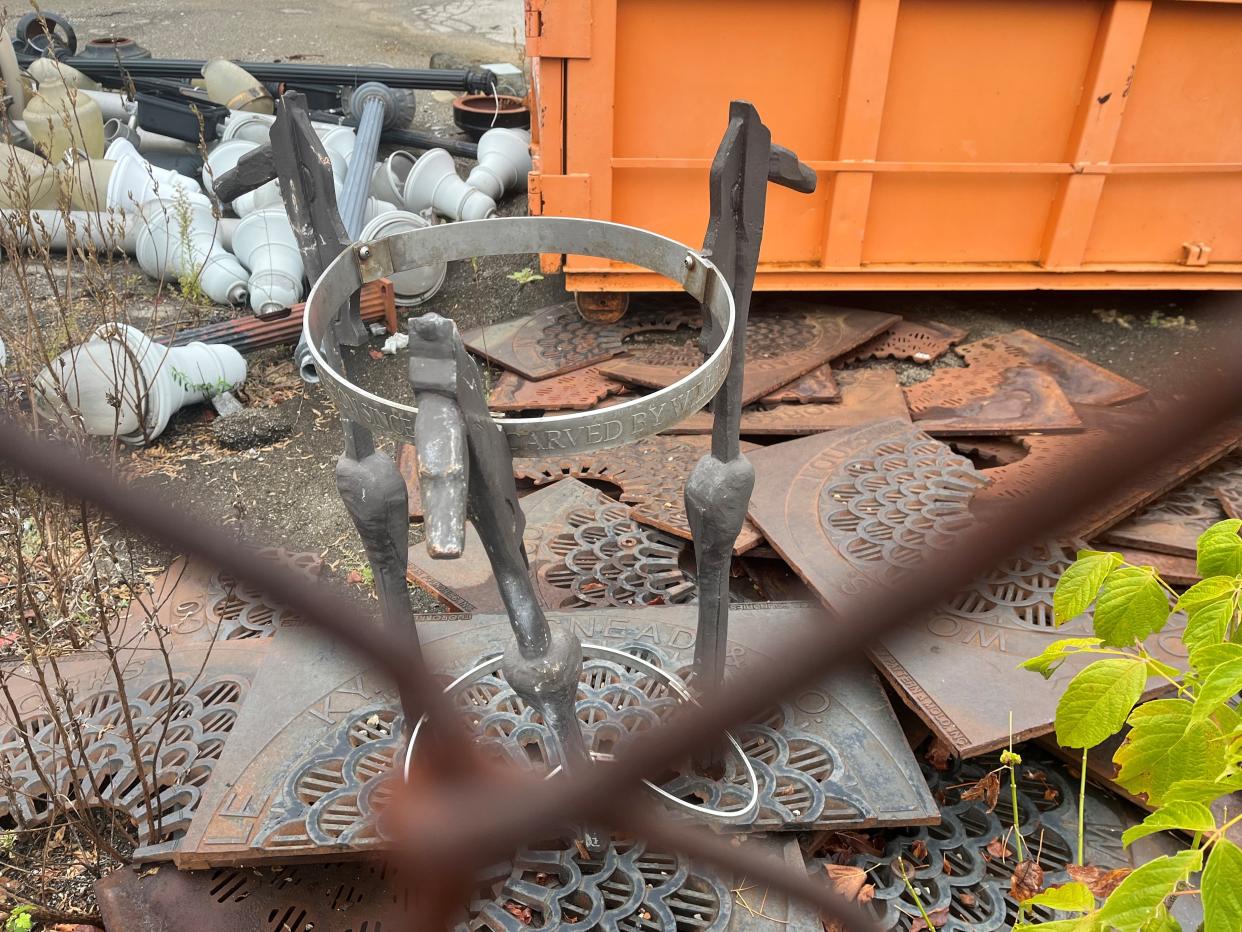
They were a small, but pretty cool part of the Main Street makeover that won awards in the mid-1990s.
The $3.2 million project replaced ugly slabs of concrete with brick pavers and widened the sidewalks.
It sunk into the new sidewalks bronze home plates and baseball bats of some of the greatest players whose names ever adorned Hillerich & Bradsby's Northern white ash sticks.
It spread other pieces of public art that tied the past to the present from East to West Main Street, including an unstable-looking tower of stones meant to recall the terrible tornado that tore through downtown in 1890.
And there was one small, often-unnoticed nod to our past where there were trees planted.
The city commissioned artists from across Kentucky — artists like Barney Bright, Tom Butsch and Ed Hamilton — to carve walking sticks that recalled something from our history.
They were then cast in bronze and and made into tree guards — three bronze walking sticks for each tree and a couple of aluminum hoops that formed a cage around each of the tree trunks.
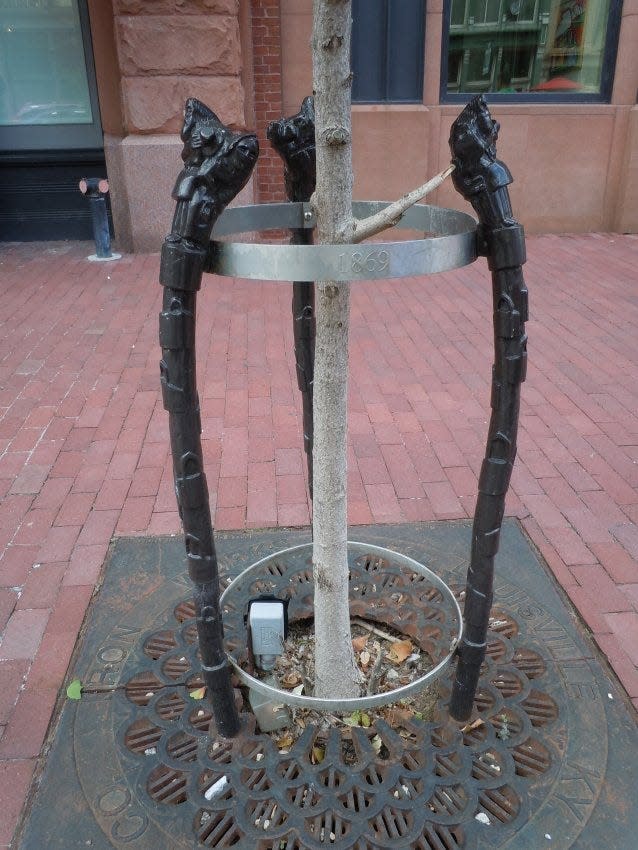
I'm not certain how many there were. A story in the Courier Journal at that time said 30 artists were commissioned, but a city website says it was two dozen.
The iron grates that went over the tree wells were cast from a mold based on the design of a coal chute found in one of the buildings on Main Street. The walking sticks screwed into the grates.
In front of a hat maker's shop, the walking stick was one small top hat stacked atop another. In front of the old Louisville Distillery, it was a stack of barrels. And in front of the Louisville & Paducah Railroad offices, it was a train track that rose to form a 19th century locomotive at the top.
They were cool little "Easter eggs," if you will — neat little clues about Louisville and its past if you were attentive to the small details many of us so often overlook.
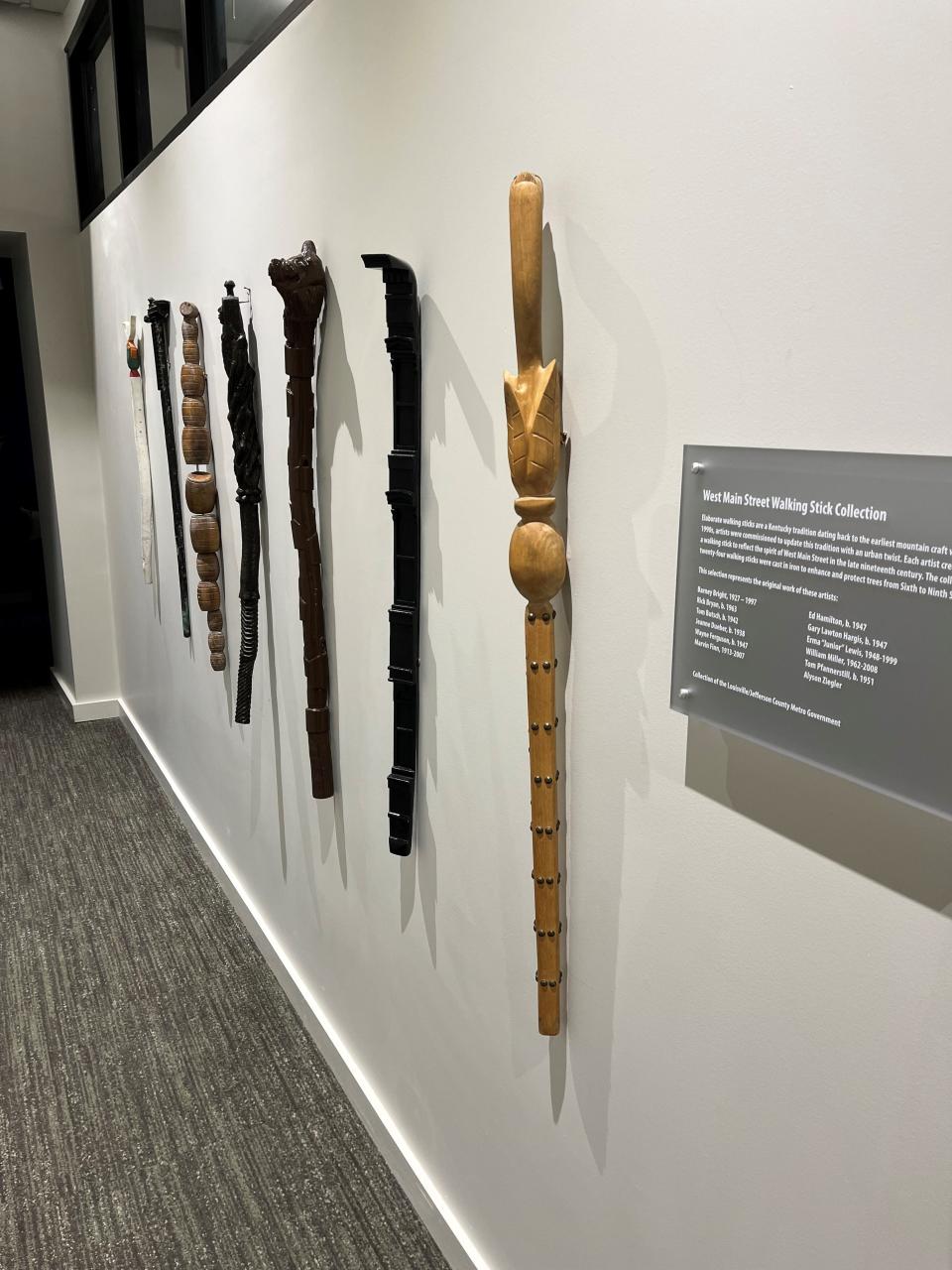
But then a couple of years ago, they disappeared. We're not sure exactly when.
Kevin Trager, a spokesman for Mayor Craig Greenberg, thinks it happened sometime in 2022. The person who tipped me off to this said he thought it was back in the fall of 2021.
Doesn't really matter when. What matters is why.
Someone at Metro Parks decided the cutouts in the pavers where the trees were planted needed to be enlarged and new trees planted in them.
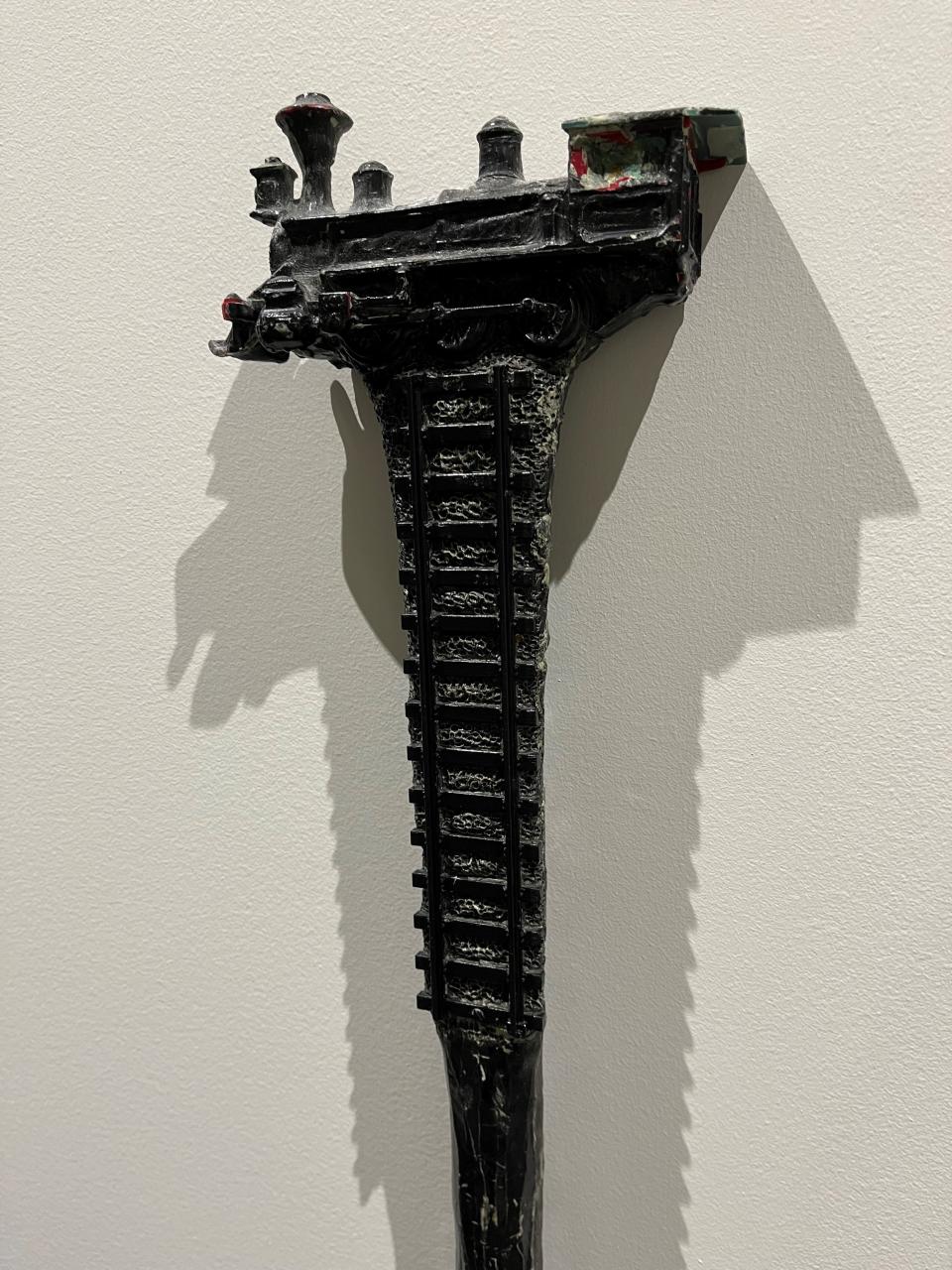
That meant the tree grates would be too small and would have to be removed.
And because the walking sticks screwed into the grates, well, they would have to go too.
Instead of carefully removing the aluminum bands from the walking sticks and lovingly unscrewing the walking sticks from the grates, workers just pulled up the grates, walking sticks and aluminum bands and tossed them into city trucks.
Some of them, if not all, remained attached.
Barry Alberts, who headed up the Louisville Development Authority, estimated the walking sticks took up about $300,000 of the Main Street revitalization project's $3.2 million budget.
Possibly less.
Memories fade. Twenty eight years is a long time.
Whatever, probably no one told the workers they were dealing with precious pieces of public art. It was a failure in leadership.
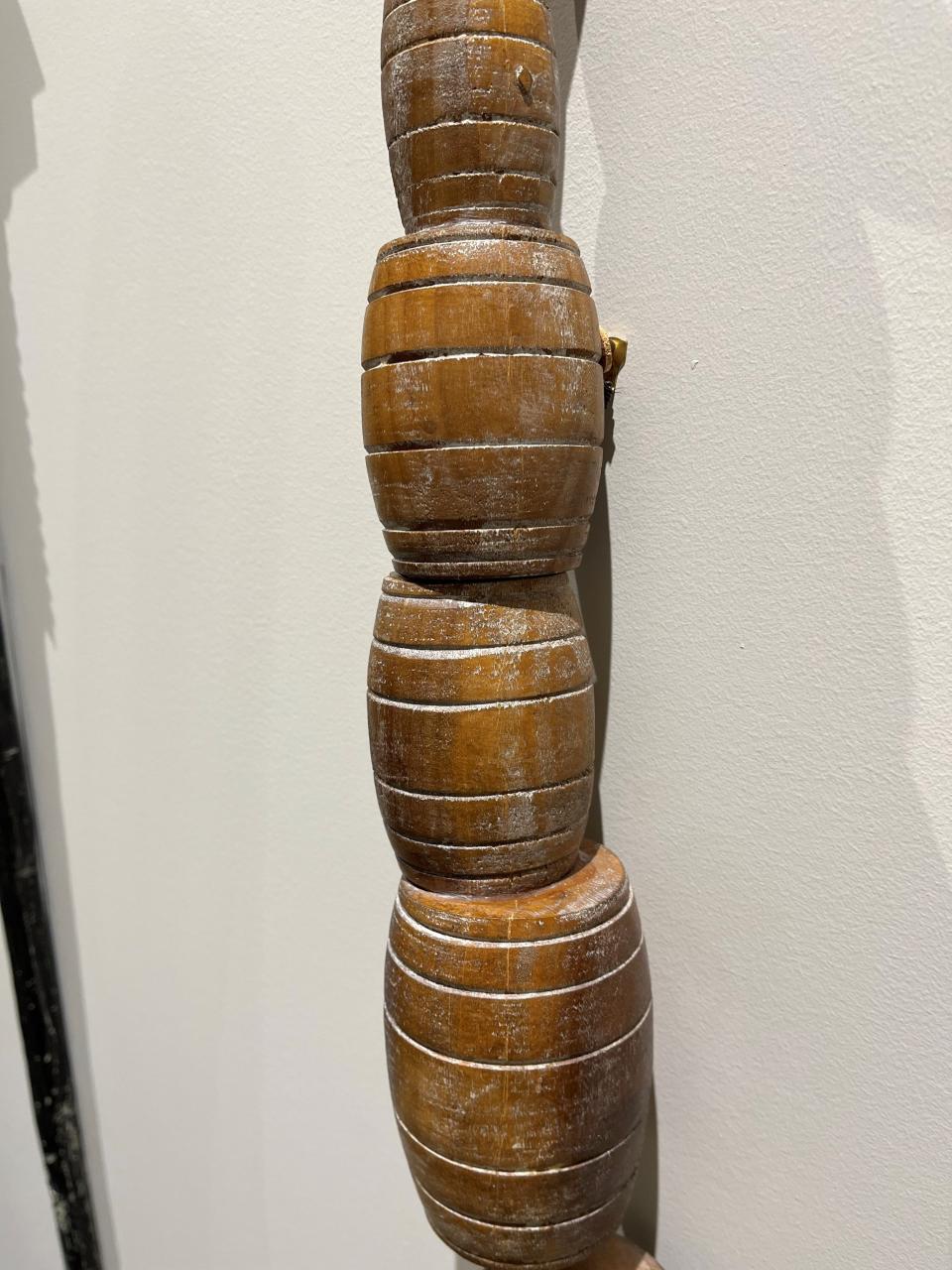
"During that process the grates and circular aluminum bands that connected the walking sticks were damaged, as were components of the walking sticks," Trager said.
We should note that the damage occurred during a prior administration and Greenberg has been left to clean up the mess.
Through a spokeswoman, former Mayor Greg Fischer said he wasn't briefed on the removal of the guards at the time but that he learned afterward that it was done to help protect the trees.
"He understands the need for that, given that protecting and increasing the city's tree canopy was a focus of his administration," Jean Porter said in a statement.
For a while, the tree guards were in a heap, on top of a pile of the grates in a scrapyard on Lexington Road between a city street maintenance facility and Breslin Park.
At some point, someone complained and the city's Commission on Public Art took possession of the bent and broken walking sticks and mangled aluminum bands.
Eleven of the original wooden walking sticks are on display in the Main Street offices of Leadership Louisville — hanging on a back hallway near a conference room.
"The Office of Arts & Creative Industries is working with artist Jack Mackie on a redesign, which would include casting additional walking sticks to accommodate the larger footprint of the tree well, fabricating new connecting bands and creating a new system of anchoring them without grates. In the meantime, the walking sticks are safe in storage," Trager said.
Well, all but one.
There's still a set of the walking sticks and metal bands sitting in that scrapyard.
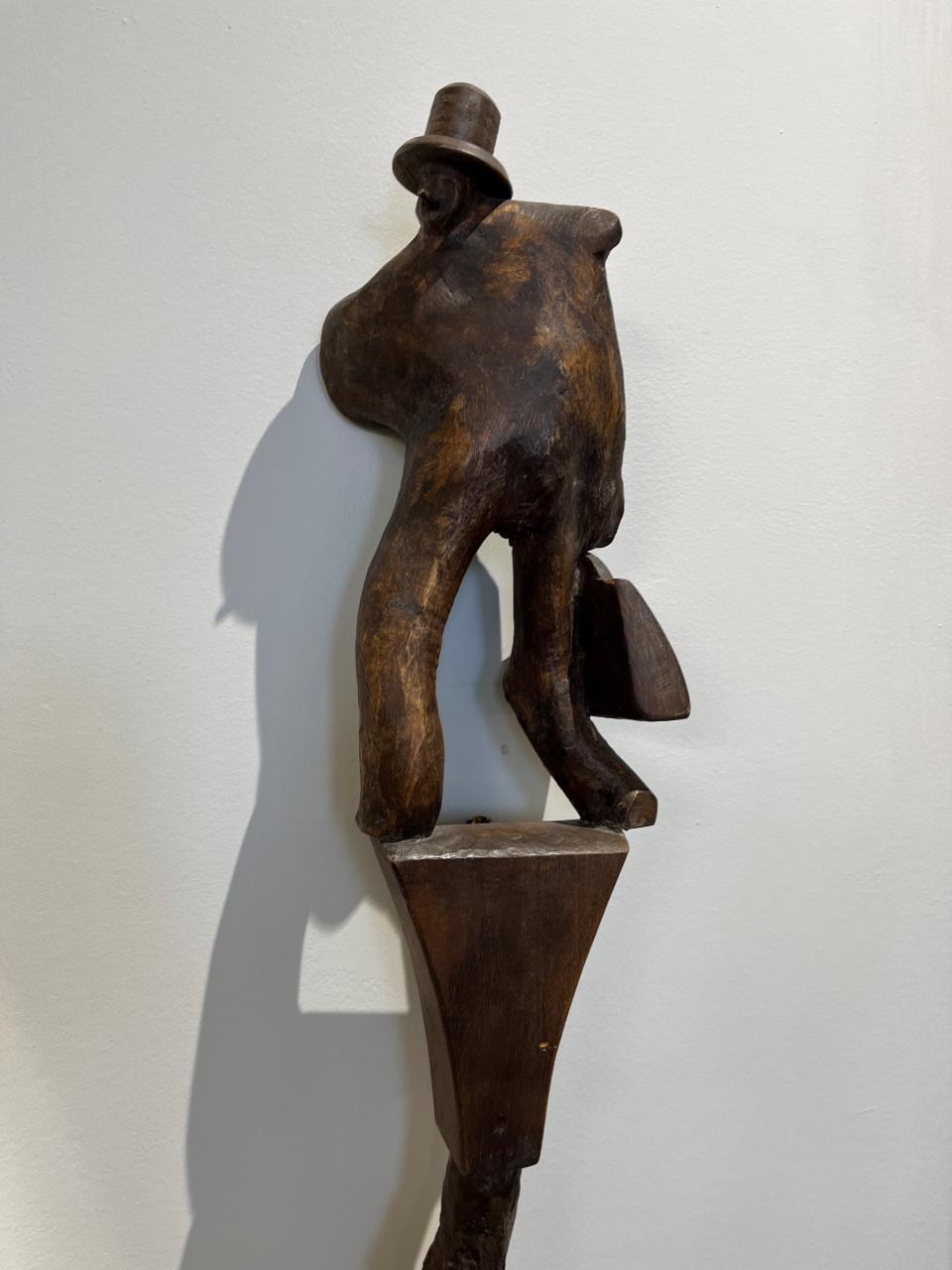
I asked to see the walking sticks, and Trager told me the person in charge of them was on vacation and we couldn't get in to see them.
If and when the walking sticks are repaired, replaced or returned is anyone's guess.
Caitlin Bowling, a spokeswoman for the city's public art commission, said the city and Mackie are still trying to figure out how much the project will cost and how long it will take.
Porter said that "as a proponent of public art, Mayor Fischer is pleased that steps have been taken to preserve and reuse the walking stick tree guards."
Meanwhile the bent and broken walking sticks and mangled aluminum bands lie in storage somewhere or sit in a city scrapyard.
Joseph Gerth can be reached at 502-582-4702 or by email at jgerth@courierjournal.com.
This article originally appeared on Louisville Courier Journal: Louisville destroyed public art that adorned Main Street since 1995

